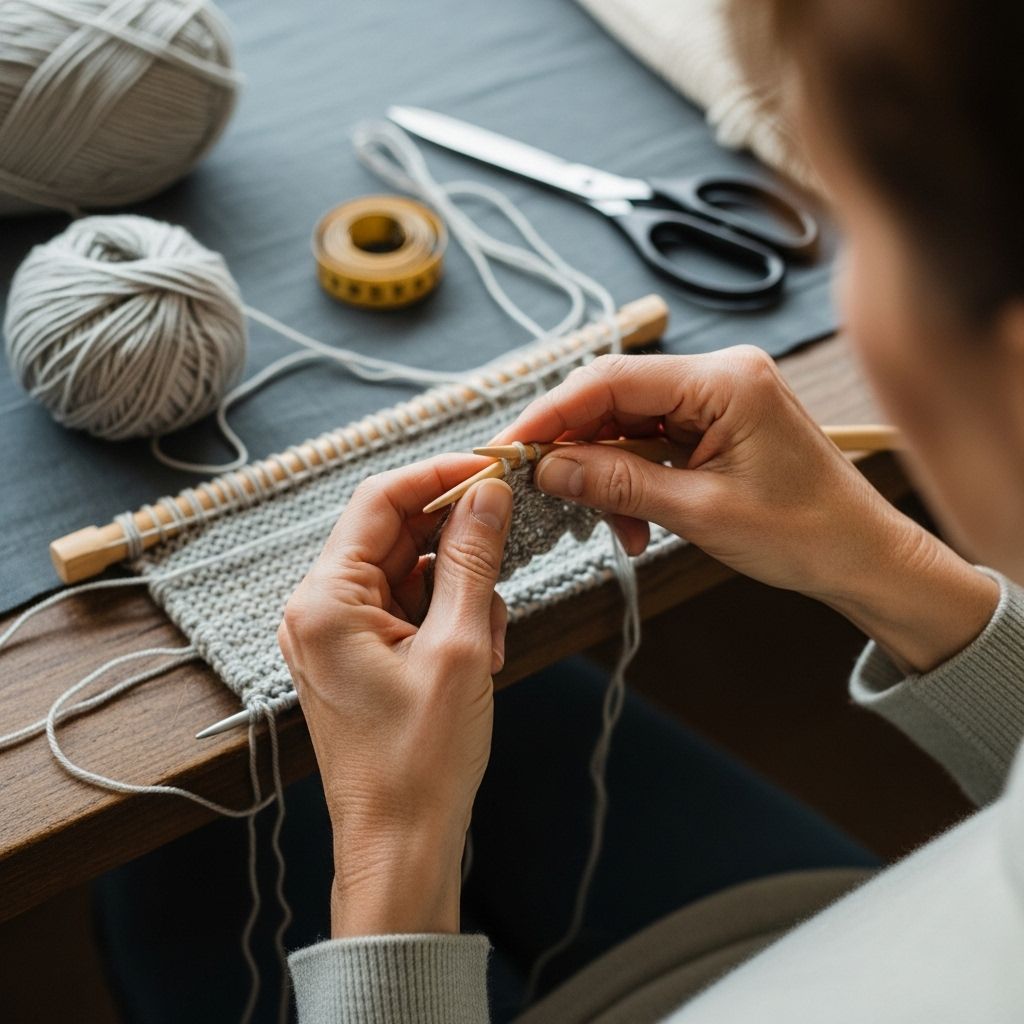The Calming Effect of Repetition in Crafting on the Brain
Simple crafting routines can quiet the mind and foster a steady sense of tranquility.

Introduction to Repetition in Crafting
Crafting, with its repetitive motions and tasks, has long been recognized as a therapeutic activity that can provide individuals with a sense of calm and focus. One of the key elements that contribute to this calming effect is repetition. Repetition in crafting not only enhances the efficiency of neural processes but also fosters mindfulness, allowing individuals to engage more deeply with their craft. This article delves into the role of repetition in crafting, exploring its impact on the brain and how it contributes to a state of serenity.
The Psychological Benefits of Repetition
Repetition is a fundamental concept in psychology, often associated with learning and memory. When stimuli are repeated, they are remembered better and retained longer, which is due to the brain’s ability to process information more efficiently over time. This efficiency is partly due to a phenomenon known as repetition suppression, where repeated stimuli lead to decreased neural activity while improving performance. This reduction in neural activity can be linked to enhanced neural processing and learning, as the brain becomes more adept at handling familiar tasks or stimuli.
Neural Mechanisms of Repetition Suppression
Research has shown that repetition suppression occurs across multiple brain regions and at various temporal scales, from milliseconds to days. This stimulus-specific reduction in neural activity is crucial for streamlining cognitive processes and reducing cognitive load. For instance, when engaging in repetitive tasks, areas of the brain related to attention and control may become less active as the tasks become more familiar, allowing for smoother execution and reduced mental fatigue.
Crafting and Repetition: A Therapeutic Approach
Crafting activities, such as knitting or pottery, involve repetitive motions that engage the brain in ways similar to those seen in repetition suppression. These motions can lead to improved focus and reduced stress levels. By focusing on the repetitive aspects of a craft, individuals can enter a state of flow, which is characterized by heightened concentration, enjoyment, and a sense of effortlessness. This state of flow is beneficial for mental well-being, as it provides a break from the constant demands of modern life and offers a sense of accomplishment and satisfaction.
Mindfulness and the Role of Repetition
Mindfulness, the practice of being fully present and engaged in the current moment, is closely linked to the calming effects of repetition in crafting. The repetitive nature of many crafts encourages mindfulness, as individuals must focus on each stitch or each brushstroke to achieve the desired outcome. This focus on the present moment can help reduce worries about the past or future, leading to a more tranquil mental state.
Cognitive Benefits of Repetitive Crafting Activities
Beyond the psychological benefits, repetitive crafting activities can also enhance cognitive function. Engaging in repetitive tasks can improve memory and attention by strengthening neural pathways involved in these processes. Additionally, the cognitive demands of crafting, such as pattern recognition and problem-solving, can help maintain cognitive abilities and potentially delay cognitive decline in older adults.
Reducing Stress Through Repetition in Crafting
Repetition in crafting offers a unique combination of distractions that can help reduce stress. By focusing on the repetitive motions required for a craft, individuals can shift their attention away from stressful thoughts and emotions. This distraction, combined with the calming effects of mindfulness, makes crafting an effective tool for stress management and relaxation.
Examples of Repetitive Crafting Activities
- Knitting or Crochet: These activities involve repetitive motions that can be meditative, allowing individuals to focus on the present moment and relax.
- Pottery or Ceramics: The repetitive motions involved in shaping clay can be calming and meditative, providing a therapeutic outlet for stress.
- Woodworking or Carpentry: While not always repetitive, certain aspects like sanding or carving can provide a calming, meditative experience.
Conclusion
The role of repetition in crafting is multifaceted, offering benefits that extend from cognitive enhancement to stress reduction and mindfulness. By understanding how repetition affects the brain and incorporating these principles into crafting activities, individuals can harness the full therapeutic potential of such pursuits. Whether through knitting, pottery, or other crafts, repetition plays a crucial role in creating a calming and meditative experience that can improve mental well-being.
Frequently Asked Questions (FAQs)
Q: How does repetition in crafting affect the brain?
A: Repetition in crafting can reduce neural activity in areas related to attention and control, leading to improved efficiency and reduced cognitive load. This can result in a more relaxed and focused state, beneficial for mental health.
Q: What are some examples of repetitive crafting activities that can be calming?
A: Activities like knitting, crochet, pottery, and woodworking can be highly repetitive and calming. These crafts often involve repetitive motions that can induce a meditative state, reducing stress and improving focus.
Q: Can repetition in crafting help with stress management?
A: Yes, repetition in crafting can be an effective tool for reducing stress. By focusing on repetitive motions, individuals can shift their attention away from stressful thoughts and achieve a more relaxed state.
References
- https://pmc.ncbi.nlm.nih.gov/articles/PMC6050388/
- http://vpnl.stanford.edu/papers/kgs_etal_TICS.06.pdf
- https://pmc.ncbi.nlm.nih.gov/articles/PMC2203616/
- https://www.frontiersin.org/journals/psychology/articles/10.3389/fpsyg.2023.994903/full
- https://www.psychologytoday.com/us/blog/the-main-ingredient/202509/harnessing-the-power-of-repetition-for-good-and-evil
- https://kids.frontiersin.org/articles/10.3389/frym.2021.582203
Read full bio of Sneha Tete












